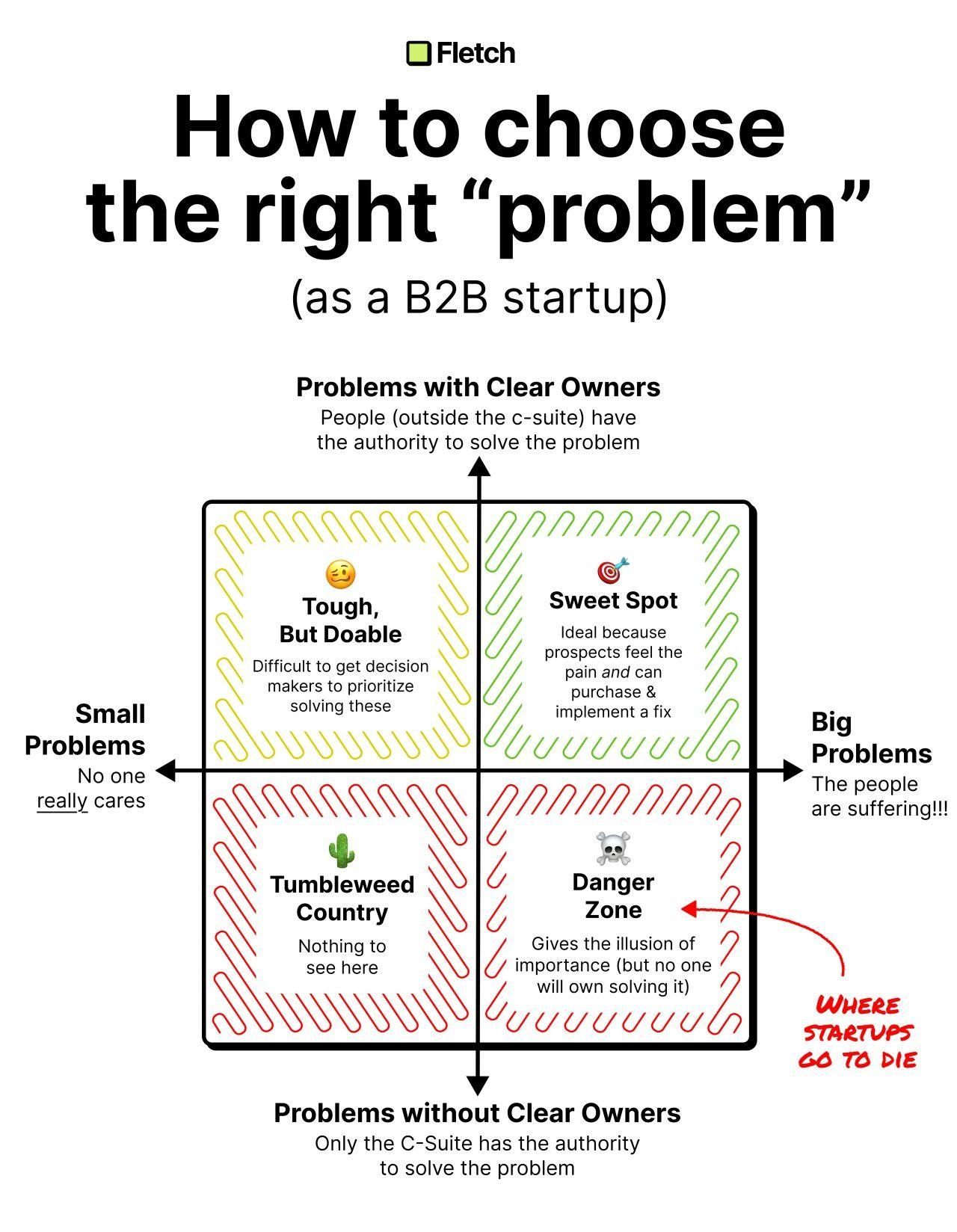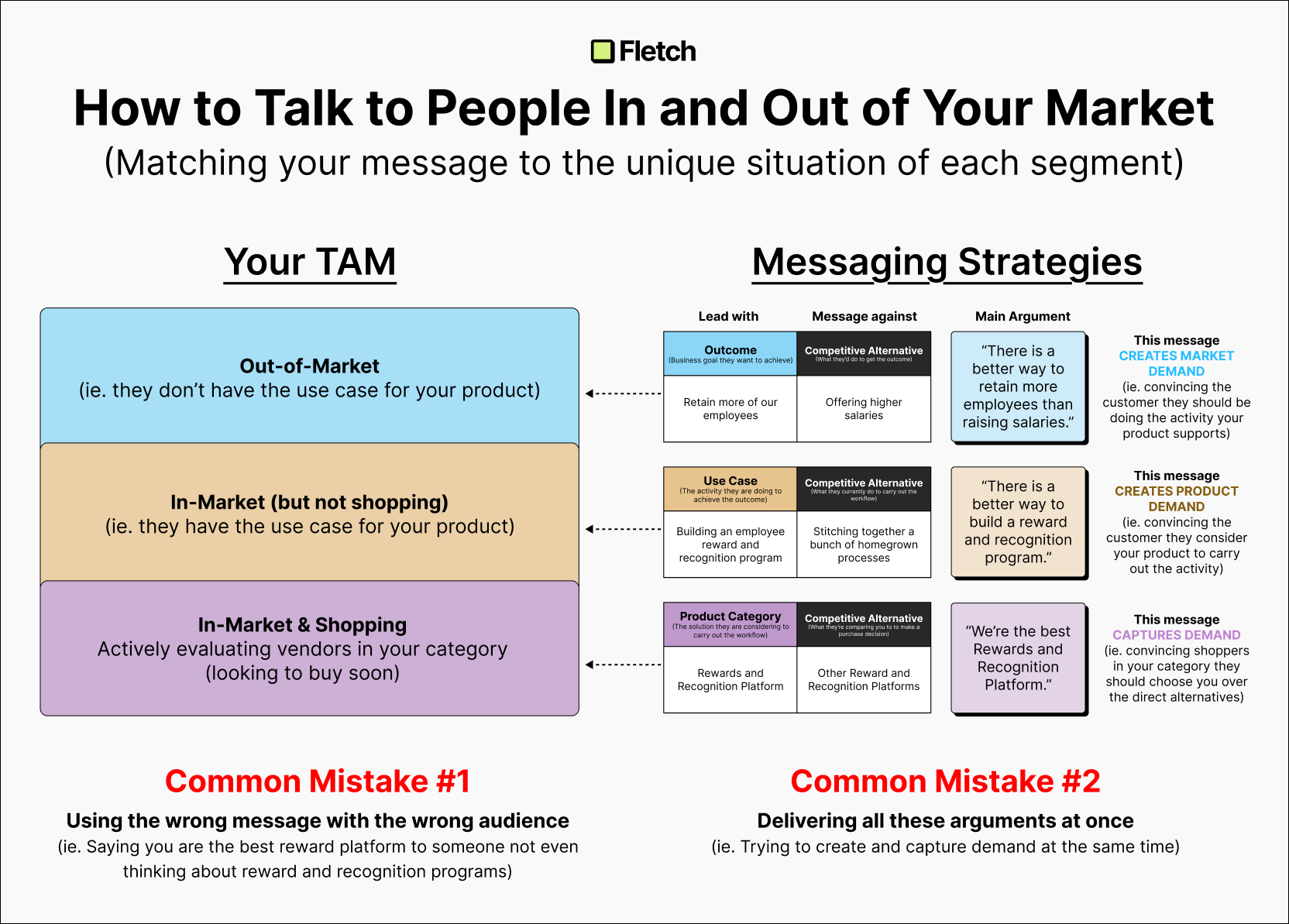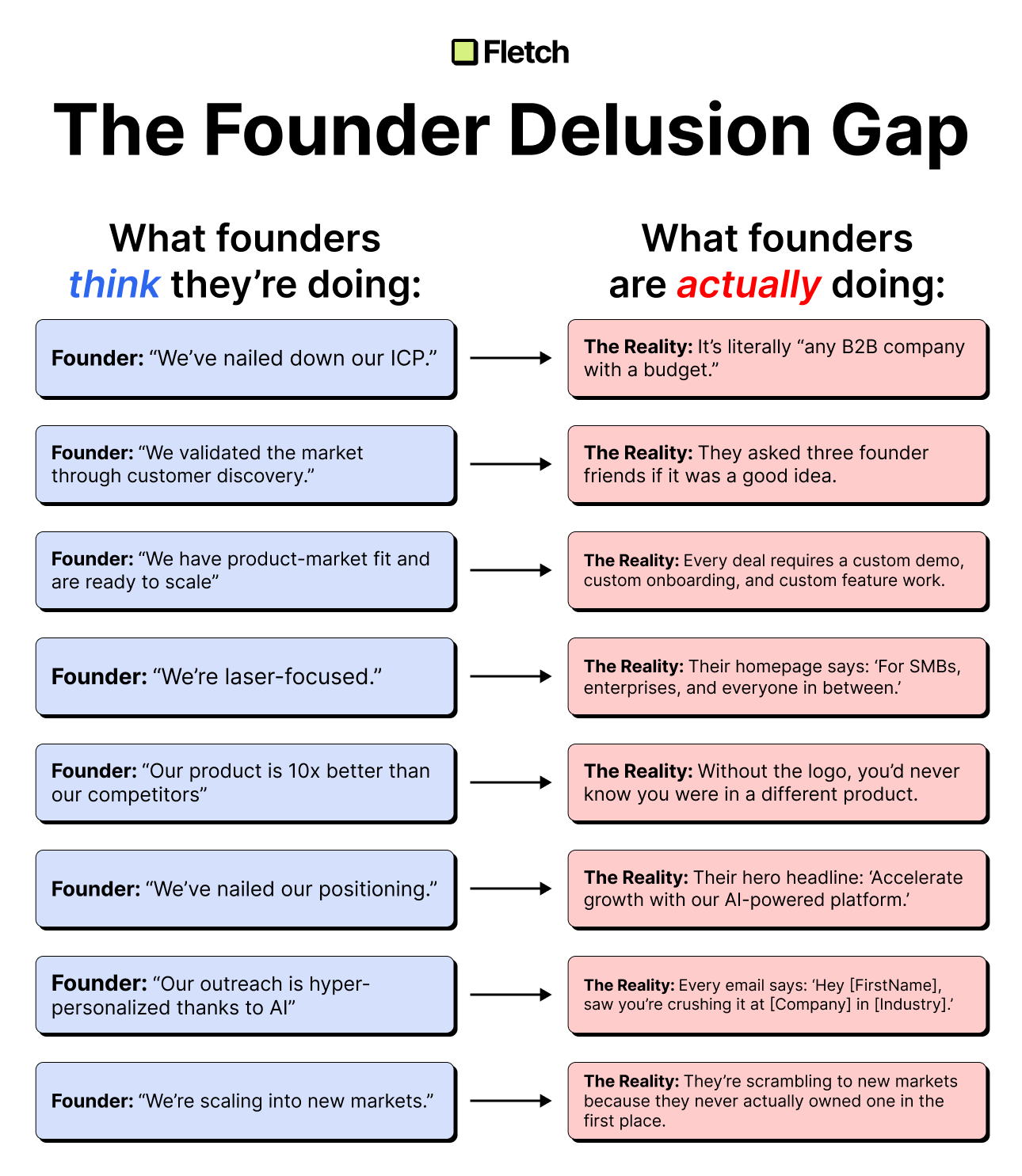How to choose the “right problem” as a B2B startup


Here's one of the biggest reasons B2B startups fail.
(And very few seem to actually notice this...)
Lots of founders are great at painting a vivid picture of a BIG pain.
They’ll describe...
❌ tons of broken workflows
❌ endless manual work
❌ dropped handoffs
❌ duplicated effort
❌ wasted time
...and it's generally a fairly compelling picture.
But the issue is this:
In the companies they target, nobody owns the problem they’re trying to solve.
Say, your startup is aimed at fixing bad CRM data across the org...
...who owns that?
- Marketing?
- RevOps?
- Sales?
How about these? Who owns…
→ Attribution & touchpoints that aren’t tracked
→ Consolidating customer feedback
→ Maintaining custom-built internal tools
→ Tech debt that slows every new release
The bigger, broader the problem, the more likely it is that it spans multiple departments…
…all of which experience their specific version of the problem…
…and big, cross-functional pain points only get solved with C-level sponsorship (which almost never happens). Just trying to make executives aware of a problem they have no idea they even have is an uphill battle very few startups win.
So here's what happens in the positioning process:
→ Founder: “We solve X, and it’s a big company-wide problem that lots of companies struggle with.”
→ Me: But that’s not the reason people book demos with you, right?
→ Founder: “Well, no. They usually have problem Z, or sometimes they have problem Y.”
→ Me: Right, but Z and Y aren’t really connected, are they?
→ Founder: “Well – not really, but both stem from this big, company-wide problem of X!”
→ Me: Sure. But does anyone actually own solving X? Is it anyone’s job? Is anyone looking? Does anyone have budget for solving it?
🦗🦗🦗🦗🦗 crickets 🦗🦗🦗🦗🦗
If no one really owns the problem, no one is looking for the solution.
Take Asana for an example.
They could have said they fix “cross-departmental collaboration across the company”: a big, messy, painful problem – that no single team owns.
But instead, they started with project management for individual teams.
So if you want a realistic shot in the market, especially in the early stage:
👉 Your product has to solve a problem that someone owns, feels, and can act on.
The startup graveyard is full of tools that solved “everyone’s problem” — and therefore no one’s.

Ben Wilentz
Founder, Stealth Startup




